
Lake Akan, located in eastern Hokkaido, is surrounded by gorgeous natural scenery and high-quality hot springs. It is the home of the cute unique natural treasure, marimo algae balls, and filled with the charm of the indigenous Ainu culture.
Here we will take a look at some of the best and most popular sightseeing locations around Lake Akan, which draws in many visitors from both locally and around the world.
- Table of Contents
-
- Hokkaido’s Lake Akan: Gorgeous Lake Surrounded By Nature
- Pleasure Boat Cruise on Lake Akan: Spectacular Views, and the Mystery of the Marimo
- Hokkaido’s Chuurui Island and the Secret of the Marimo
- Enjoy Traditional Cuisine in the Ainu Settlement at Lake Akan
- Traditional Ainu Dance and Ceremonial Demonstration Theater
- Hot Springs and “Bokke!” More Things to Enjoy at Lake Akan

Hokkaido’s Lake Akan: Gorgeous Lake Surrounded By Nature
Lake Akan is located in Kushiro City of eastern Hokkaido. Born from a volcanic eruption in the Akan caldera around 158 years ago, it was designated as Akan Mashu National Park, together with the neighboring Lakes Kussharo, Mashu, and Onneto.
Its size is approximately 13 square kilometers, and 26 kilometers around. While ranking 11th in size amongst the lakes of Hokkaido, it is still a sight to behold. You can get to Lake Akan by car from Tancho Kushiro Airport in about 60 minutes.

Because of the volcanic activity in the area, the surroundings are abundant in hot springs and hot spring resorts.
The town is also famous for being one of the few natural habitats of rare marimo algae balls, as well as the largest settlement in Hokkaido of the indigenous Ainu people. With beautiful natural landscapes in each season, it also boasts popularity as an attractive and versatile tourist destination.
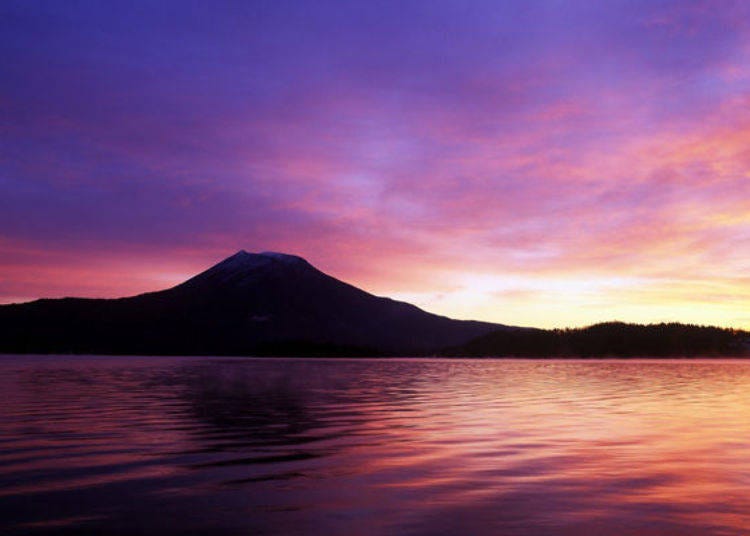

I was happy to visit these locations and experience the charm unique to Lake Akan!
Pleasure Boat Cruise on Lake Akan: Spectacular Views, and the Mystery of the Marimo
When visiting Lake Akan, you may want to catch a ride on the Akan Kanko Kisen (a sightseeing boat) and take in the magnificent views from the lake itself.
Before returning, the cruiser makes a stop at Chuurui Island, a small island floating on the north side of the lake. You can learn about the ecology of the marimo by visiting the Marimo Exhibition and Observation Center on the island.


There are two places where you can access the pleasure boat on the south side of the lakeshore. The first is Marimo-no-Sato Pier, which is the start and end point for one route, while the boat at Koun-no-Mori Pier is a mid-route stop.
Both are located in the hot springs village, and both have the same boarding fee (¥1900 adults, ¥990 children, tax included), so they are convenient and easily accessible from most accommodation facilities.
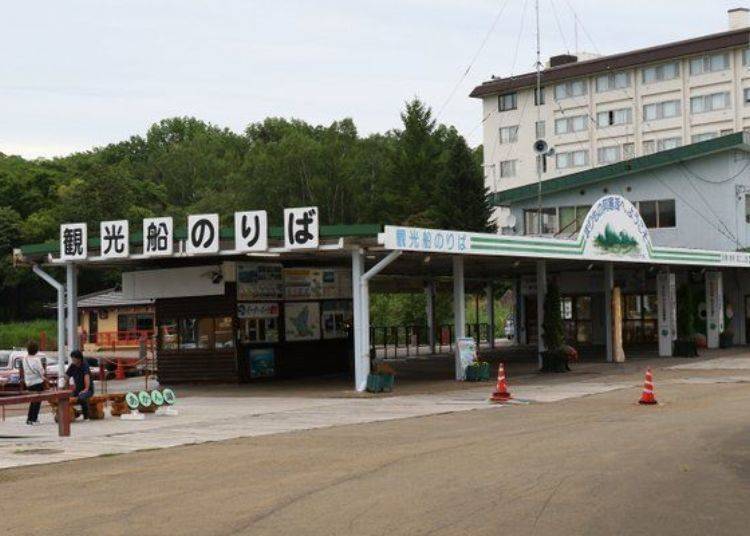
The period of operation is from April 15 to November 30. Departure time and frequency may vary seasonally, so I recommend checking the Akan Kanko Kisen website (<@www.akankisen.com|a=www.akankisen.com@>) in advance.

About 5 minutes after departure, we arrived at the other stop, the Koun-no-Mori Pier. Once the passengers board here, the real tour begins.
After leaving the pier, the boat heads towards the east side of the lake. A guide offers commentary during the trip about the view and about Lake Akan. The first thing we saw was Mount Oakan, right in front of us in the direction we were headed.
We also noticed the thickness of the trees surrounding Lake Akan and the majestic landscape of the mountains towering in the background.

Looking back towards the hot springs village from atop the lake you will see a pair of other mountains looming in the background. These are Mt. Akan-Fuji and Mt. Meakan. According to Ainu legend, Mt. Meakan is called "Pinneshiri," or "man's mountain," and Mt. Akan-Fuji is called "Machineshiri," or "woman's mountain." Together, these represent and are regarded as a couple.
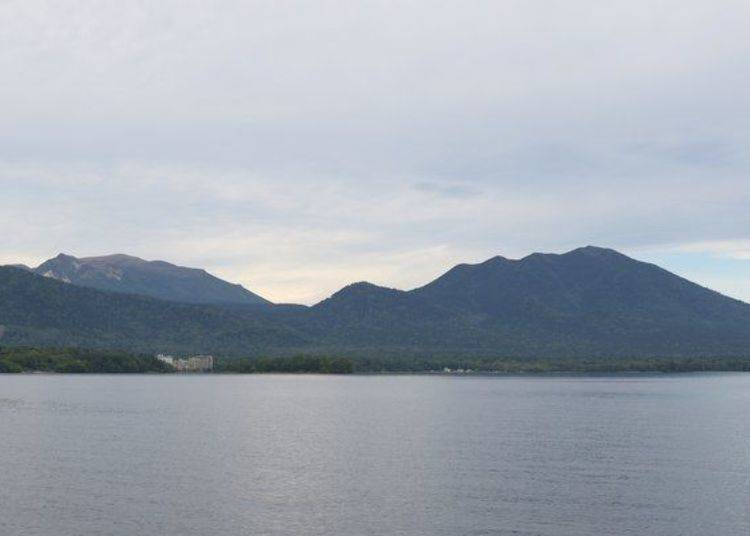
The boat then entered the bay from a passage through the trees called Takeguchi, a scenic spot where you can see various flowers as well as beautiful autumn foliage depending on the season. Entering this seemingly unexplored area was very exciting, and started to feel like a real adventure!

Hokkaido’s Chuurui Island and the Secret of the Marimo

After reaching a dead-end at the backside of Takiguchi, the boat turns around and continues towards Chuurui Island on the north side. Landing on this island, we stayed for about 15 minutes to check out the various exhibits on the ecology of the marimo.

After walking about 3 minutes from the island pier, we arrived at the observation space overlooking Mt. Akan-Fuji and Mt. Meakan. This is the rooftop of the exhibition center, from which we head downstairs and enter the building. The admission is included with the fee paid to ride the boat.

Marimo were first discovered in Lake Akan in 1897 by Mr. Tatsuhiko Kawakami, a botanist of Sapporo Agricultural College (now Hokkaido University).
In 1921 they were designated as a natural monument of Japan, and later as a special natural treasure in 1952.
They are currently protected, as their natural habitat is very limited to only a few lakes and therefore uncommon to see, however you can easily observe them by visiting this center.

Marimo have been confirmed to exist in various parts of the Northern Hemisphere in North America and Europe.
However it is believed that Lake Akan is the only such lake in the world that boasts marimo with a diameter of 30cm or more. It is a phenomenon of nature that is both precious and inspiring.

There was a panel exhibition that explained the structure of the marimo. While these adorable, spherically-shaped green algae balls are the most well-known kind of marimo, they are not limited to this form alone. In fact, the green algae you find on rocks, the cottony algae at the bottom of the lake, and every filament of green algae is an individual part of a marimo.

The filaments of algae, when rolled around by the movement of the waves, gradually grow into a rounded shape as they combine with other filamentous bodies.
As the marimo balls age, they hollow out, causing the shape to collapse. However eventually, once these collapsed particles recombine at the bottom of the lake, they are rolled around by the waves again, forming back into a new marimo ball once more.

Exactly why these marimo balls of Lake Akan grow so round and so large, and why there are so many of them, has not yet been discovered. Because of this mystery, they have attracted the attention of people from all over.
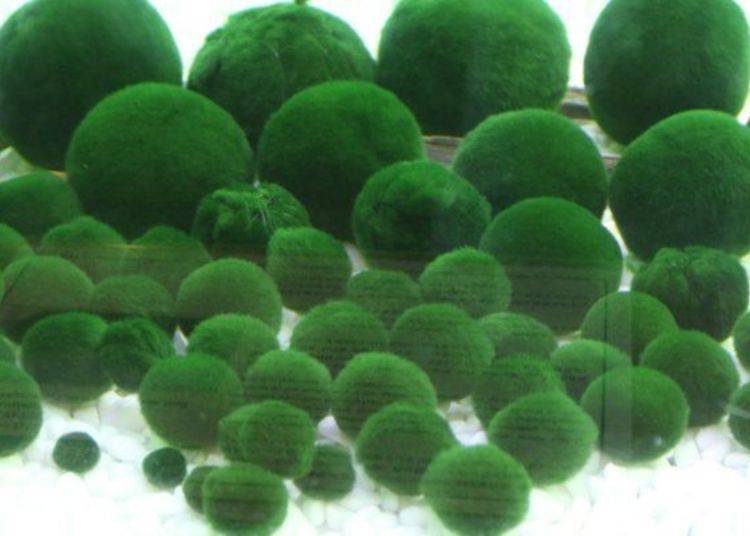
Now we board the pleasure boat once again, and return to Marimo-no-Sato Pier via the Koun-no-Mori Pier. Although short, it was a very thorough boat trip that allowed me to fully experience the mysteries of the nature and marimo of Lake Akan.

-
Akan Kanko Kisen (Akan Sightseeing Cruiser)阿寒湖観光汽船
- Address 1-5-20 Akan Lake Onsen, Akan-cho, Kushiro-shi, Hokkaido
- Phone Number 0154-67-25511
Period of Operation: April 15 - November 30, annually
Departure Times: Varies by season. Please visit official website (www.akankisen.com) for details.
One-Day Cruise Fee: ¥1900 adults, ¥990 children (tax included)
*Marimo Exhibition and Observation Center included in admission fee
Enjoy Traditional Cuisine in the Ainu Settlement at Lake Akan
Along with the marimo, another charming aspect of Lake Akan is without a doubt the culture of the Ainu of Hokkaido.
As of 2018, there are about 36 homes which house about 130 people living in Hokkaido's largest Ainu Kotan, or settlement, located in one corner of the hot springs village.
There is a museum dedicated to Ainu traditions and culture, craft shops selling hand-carved wooden products and more, restaurants that serve traditional Ainu cuisine, and even a theater showing traditional dance performances.

On the main street of the Kotan, you will find many folk craft shops selling and displaying handmade items by the craftsmen, including woodcarvings and embroidery. It's impressive just to see it from the outside, but I took the opportunity to visit two of the shops and see it on the inside as well.
There were many wood carved owls in a shop called Nitayunkuru. Handmade items crafted with love are very popular as souvenirs. There are a variety of works available for purchase, ranging from affordable ¥1000 to major works costing hundreds of thousands of yen.

In the shop called Sanramanto, there were many accessories such as necklaces and earrings featuring traditional Ainu motifs, as well as beautifully carved wooden goods of the Koro-pok-guru people of Ainu folklore.

The Kotan also has some of the only shops in Japan that offer traditional Ainu cuisine, such as Ainu Cafe Poronno. You can try various dishes, from traditional Ainu items to arranged meals.

This time, I ordered the recommended set menu of the shop, "yuku ohau," a soup made with deer, (¥1000, tax included). Ohau is the Ainu's staple hot-pot dish, a stew including venison and vegetables such as "gyoja ninniku," a type of onion.
The meal set also included "amam," which is a dish of cooked beans with leeks, and "mehun," a type of salted salmon.
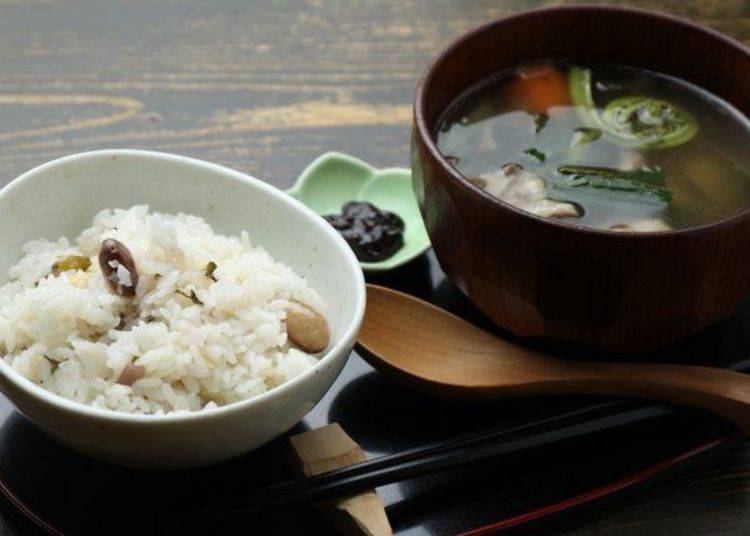
The base of the ohau is simple, made with kombu (kelp stock) and seasoned only with salt, yet has a delicious, solid taste when eaten.
This completely natural meal is packed with nutrients good for the body, paired together with the rich ingredients of the amam. The mehun is a delicacy that makes not only a good accent to the rice, but also goes well with sake.

I also ordered "kombu-shito" for dessert (¥450, tax included). "Shito" refers to dumplings made of rice flour, and these were made with "kombu-dare," a sauce made from the kelp found along the coast of Hokkaido. The flavor was very rich and delicious.

Other unique and delicious menu items you can try in Cafe Poronno include "pocchi-imo," or naturally fermented potatoes (¥450, tax included), and "yuk-don," a rice bowl with venison (¥1000, tax included), which are not only good, but good for you, too.

-
Ainu Cafe Poronnoアイヌ料理の店ポロンノ
- Address 4-7-8 Lake Akan Lake Onsen, Akan-cho, Kushiro-shi, Hokkaido
- Phone Number 0154-67-2159
Hours of Operation: 12:00 PM - 3:00 PM, 6:30 PM - 9:30 PM
*Reservations required during Winter (Nov-Apr)
Closed: Open daily
Because the Kotan shops are mostly open until 10PM, I was happy to be able to take my time walking around, even after having dinner at the inn and enjoying the hot springs.
Traditional Ainu Dance and Ceremonial Demonstration Theater
Anyone who knows about the Ainu culture knows the importance of song and dance. A people without a written alphabet, they have used stories to pass down their traditions from generation to generation.
To keep these traditions alive, there are facilities in the Kotan that help pass them down. One of them is Lake Akan Ainu Theater Ikor.

The main performance in this theater is the "Ancient Ainu Dance." (Admission ¥1080 adult, ¥540 kids, tax included.) You can see both the daily life and ceremonies of the Ainu through various scenes of song and dance.
The way the performers express sadness and joy through their bodies and movement is amazing, and will draw you into their world for the entire 30 minutes of the performance.
Performance time and frequency varies by season, so please check the Ikor website (www.akanainu.jp) for details.
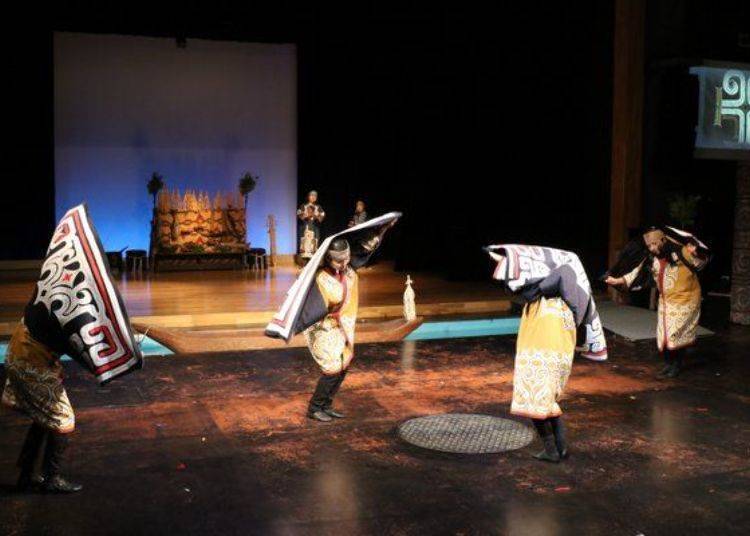

The last performance is the Iomante Fire Festival, held at 9:00 PM every night. (Admission ¥1080 adult, ¥540 kids, tax included, held from Dec ~ Apr 20.) A real flame is lit right on stage, while dancing and ceremonies create a sacred atmosphere.
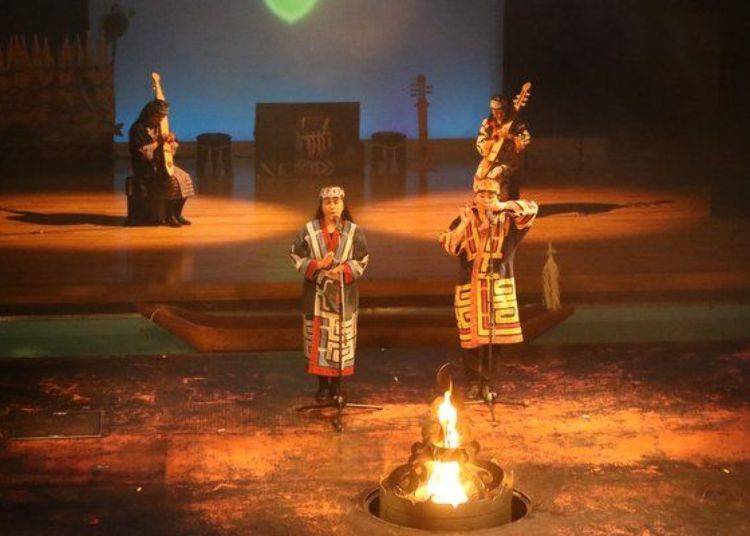
You can also visit The Ainu Life Memorial Museum Pon-chise to learn more about the Ainu culture. Unfortunately at the time I visited, this site was under renovation, so I checked out the hunting and lifestyle tools exhibit at the adjacent facility, the Ainu Bunka Denshokan Chise, instead.



When you visit Lake Akan, please check out the Ainu Kotan settlement, and learn about the Ainu culture. If you get the chance to talk with the residents of the settlement, I think you can learn a great deal from them.
-
Ainu Kotanアイヌコタン
- Address 4-7-19 Akan Lake Onsen, Akan-cho, Kushiro-shi, Hokkaido
Phone Number
0154-67-2727 (Ainu Theater Ikor)
Free to enter
Hot Springs and “Bokke!” More Things to Enjoy at Lake Akan
If you want to learn more about the nature of Lake Akan, check out the Akankohan Eco Museum Center. There is an exhibit that explains the topography around the lake, the flora and fauna that inhabit it, and more about the Ainu culture.
There's even an aquarium where you can see marimo, and fish such as himemasu (kokanee salmon), making it an exciting place.

There is also a promenade near the Eco Museum where you can take a stroll around the lake. When you get closer to the lake, the "bokke" comes into view. Bokke is an Ainu word that means "boiling place," and refers to where mud and volcanic gas burst out from underground forming bubbles, also called a mud volcano. This is where you really begin to notice that this is in fact a volcanic zone.
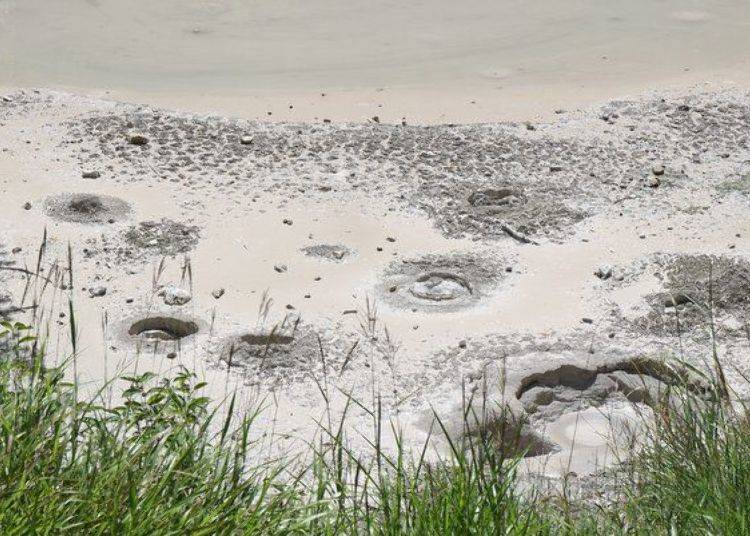
Lake Akan is also known for its hot springs. So when you are ready to relax leisurely in the hotels and inns, make sure to also enjoy the hot waters of Lake Akan in the hand and footbaths that you can enter for free.

I also recommend visiting Lake Akan during winter, when you can see the beautiful silver snow spreading over the landscape. Not only can you see the Frost Flowers blooming on the surface of the frozen lake, but you can enjoy activities such as snowmobiling and fishing for wakasaki, a Japanese pond fish. And soaking in a hot outdoor bath after being surrounded by the cold winter air is an experience like no other!

With the beautiful landscape surrounded by mountains and forest, mysteries of nature like the marimo, and the Ainu culture and it's preservation into the future, this trip to Lake Akan was abundant in amazing experiences. If you are visiting, I recommend staying a while to relax and enjoy the hot springs.

-

-
Address
Akanchoakankoonsen, Kushiro-shi, Hokkaido, 085-0467
View Map -
Nearest Station
Bihoro Station (Sekihoku Main Line)
- Phone Number 0154-31-1993
-
Address
Akanchoakankoonsen, Kushiro-shi, Hokkaido, 085-0467
- Area
- Category
*Prices and options mentioned are subject to change.
*Unless stated otherwise, all prices include tax.
Popular Tours & Activitiess
Recommended places for you
-
Appealing

Asahiyama Zoo
Zoos, Aquariums & Botanical Gardens
Asahikawa
-
Appealing

Rukku and Uohei
Izakaya
Sapporo / Chitose
-
Appealing

Otaru Canal
Rivers, Lakes & Canyons
Otaru
-

Sapporo Clock Tower
Landmarks
Sapporo / Chitose
-
Appealing

Noboribetsu Onsen
Hot Springs (Onsen) & Bath Houses (Sento)
Noboribetsu / Lake Toya
-

Niseko Village Ski Resort
Skiing & Snowboarding
Niseko / Rusutsu
-
Ad

Cycling Through Hokkaido: Discover the Beauty of Memuro and the Tokachi Plains
-

Scenic Road Trip from Hakodate to Matsumae: Stunning Views, Traditions, and Tasty Delights
by: Nobuka Kawashima
-
Ad

Smart Ways to Avoid Crowds and Enjoy a Safe, Comfortable Trip to Noboribetsu Onsen
-

BIGGEST SALE ALERT! SATUDORA Tax-Free Winter Sale: Stack Coupons for Massive Savings!
by: Guest Contributor
-

Expert-Recommended: 9 Hakodate Hotels Serving Up the Best Breakfasts in Town
by: Nobuka Kawashima
-
Ad

Smart Ways to Avoid Crowds and Enjoy a Safe, Comfortable Trip to Otaru.
-

10 Fun Activities and Magical Places in Furano - According to a Singaporean Expat
-

Healthcare in Japan for Tourists: What to Do When You Get Sick or Injured in Japan
-

Hokkaido Lavender Fields: 6 Best Places in Furano to See Japan's Dreamiest Purple Meadows
by: Nobuka Kawashima
-

Kichijoji – Explore Tokyo’s Top-Rated Stylish Suburb in Half a Day!
-

Noboribetsu Jigokudani: Guide & Best Things to Do in Hokkaido's Mysterious 'Hell Valley'!
-

Lake Shikotsu Guide: Easy Sapporo Day Trip To See Spectacular Natural Views of Hokkaido's Pristine Lake!
- #best sushi hokkaido
- #things to do hokkaido
- #best ramen sapporo
- #what to bring to japan
- #new years in tokyo
- #what to buy in ameyoko
- #japanese nail trends
- #what to do in odaiba
- #onsen tattoo friendly tokyo
- #daiso
- #best sweets otaru
- #japanese fashion culture
- #best nature furano
- #japanese convenience store snacks
- #best japanese soft drinks
















